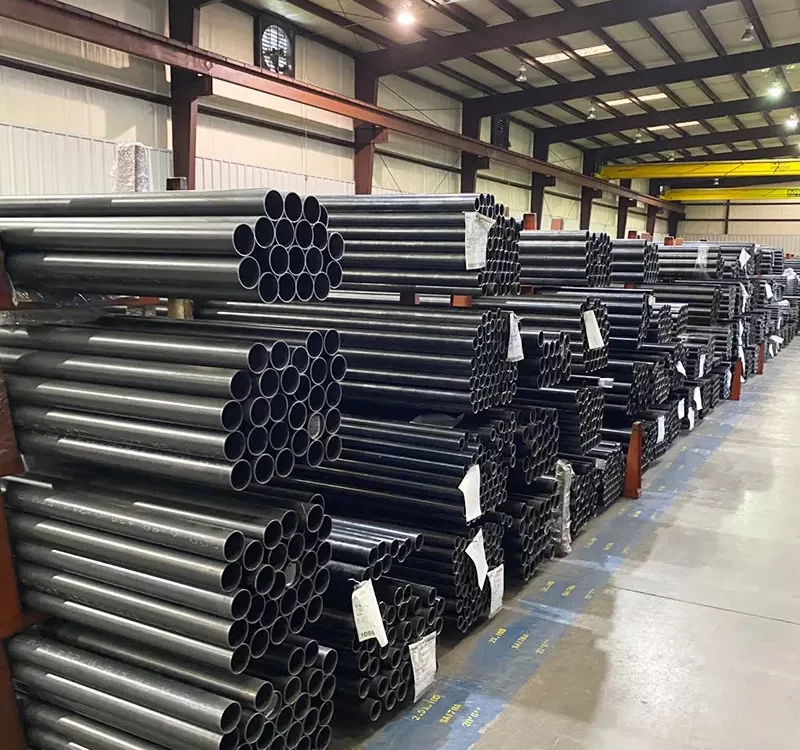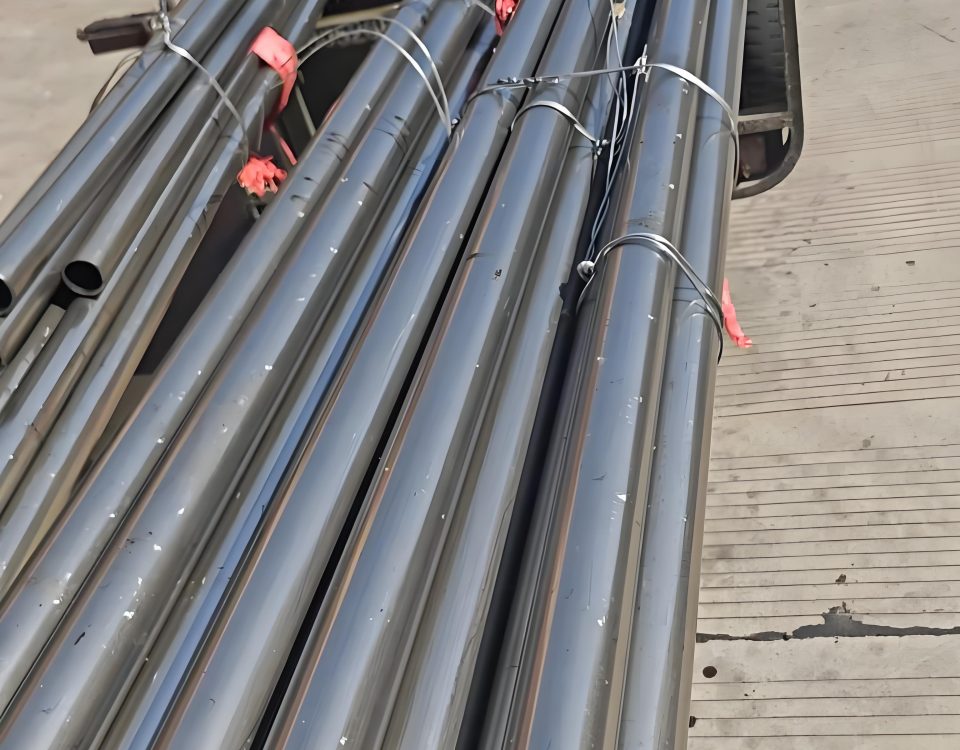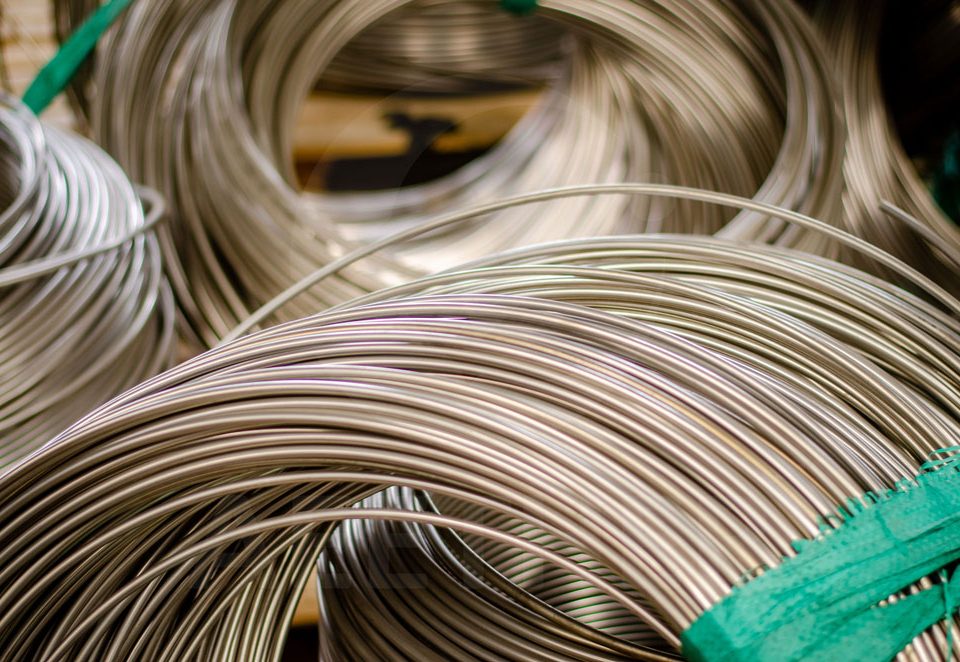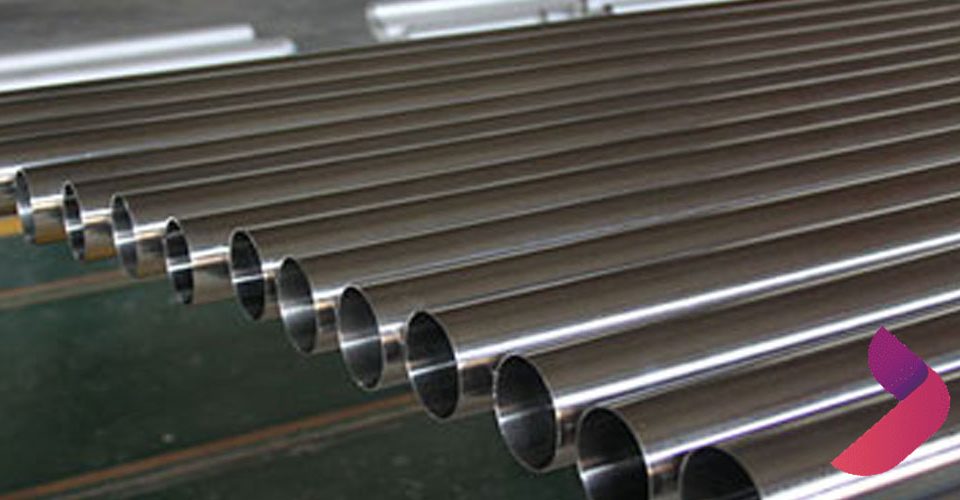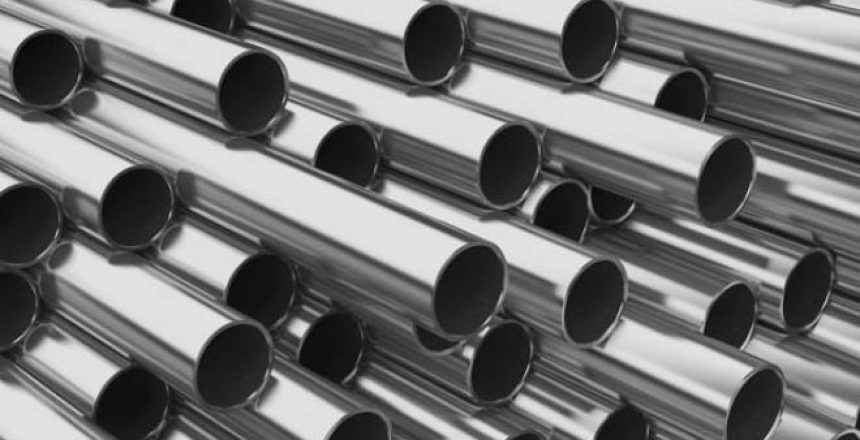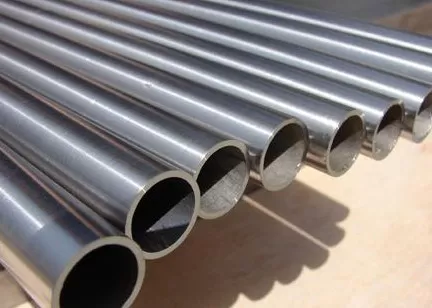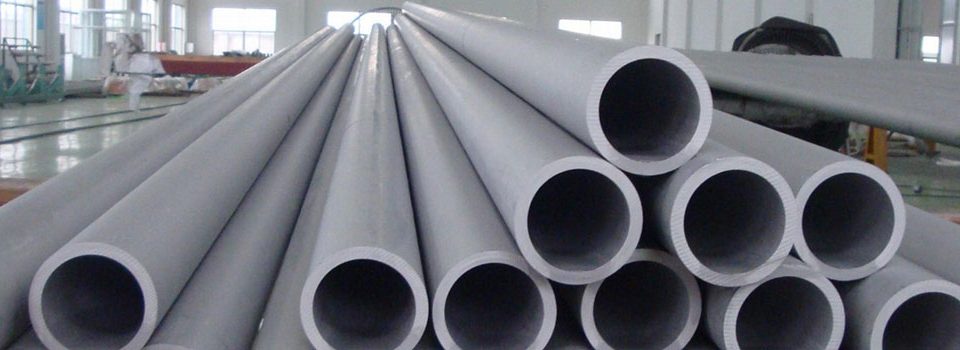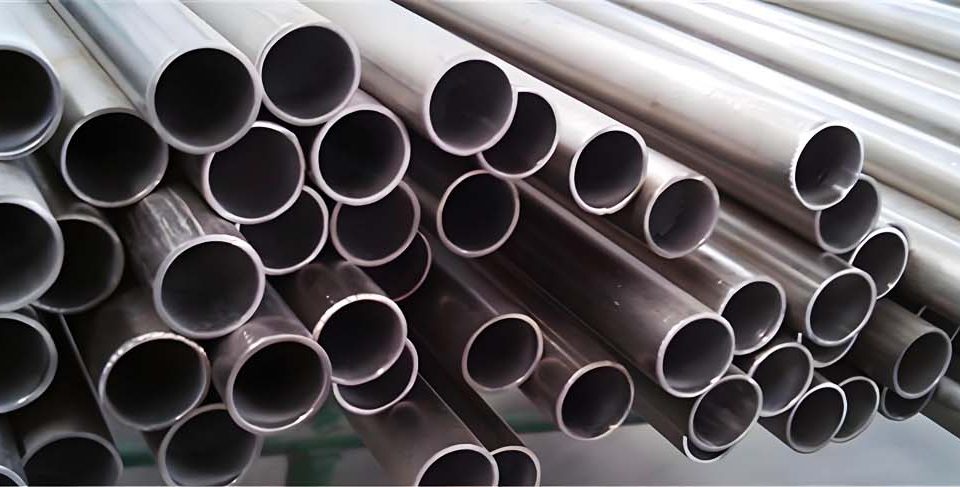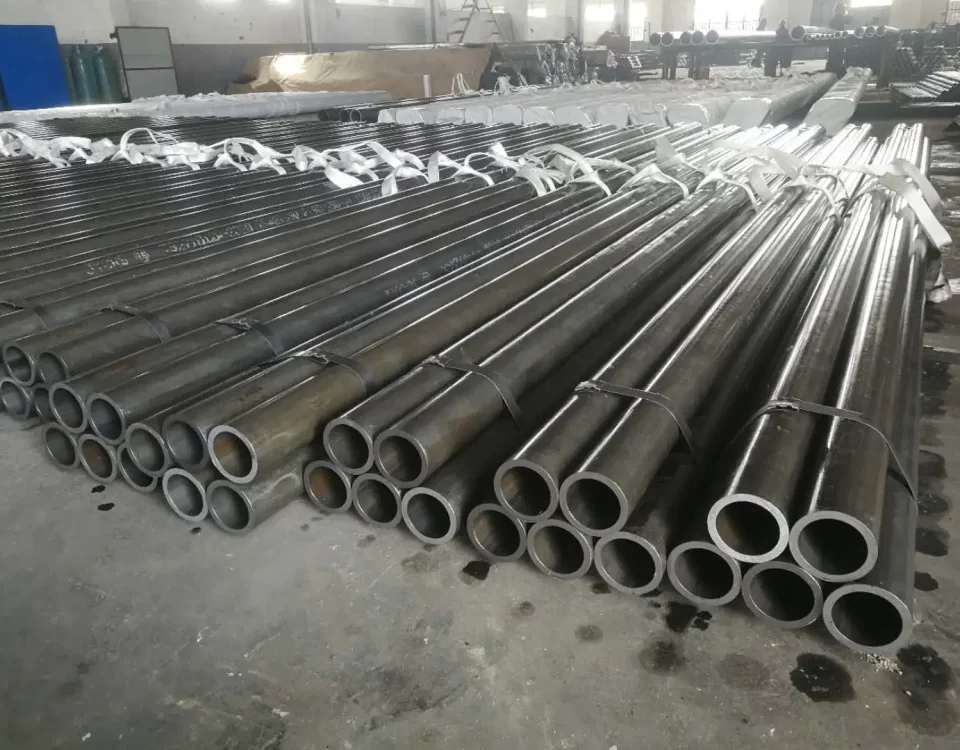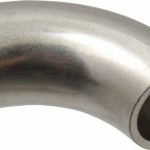
Hastelloy C276 Alloy Elbow Forming Process Research
April 22, 2025Inconel 601® (UNS N06601, W.Nr. 2.4851) Alloy Steel Pipe: Comprehensive Overview
1. Description of Inconel 601®
Inconel 601® is a high-performance nickel-chromium-iron superalloy designed for applications requiring exceptional resistance to high-temperature oxidation, corrosion, and mechanical stress. Developed by Special Metals Corporation, Inconel 601® (UNS N06601, W.Nr. 2.4851) is a general-purpose engineering material with a face-centered cubic (FCC) crystal structure, offering high metallurgical stability. Its standout feature is its ability to form a tightly adherent oxide scale that resists spalling under severe thermal cycling, making it ideal for extreme environments up to 2200°F (1200°C).
The alloy is enhanced with aluminum, which improves its oxidation resistance, particularly in cyclic high-temperature conditions. Inconel 601® also exhibits good resistance to aqueous corrosion, high mechanical strength, and excellent fabricability, allowing it to be readily formed, machined, and welded. It is widely used in industries such as thermal processing, chemical processing, aerospace, power generation, and pollution control, where durability in harsh conditions is critical.
Inconel 601® is available in various forms, including pipes, tubes, fittings, sheets, plates, bars, and forgings. This response focuses on pipes, tubes, and fittings, providing detailed insights into their properties, specifications, and applications.
2. Chemical Composition
The chemical composition of Inconel 601® is carefully balanced to achieve its high-temperature and corrosion-resistant properties. The alloy primarily consists of nickel, chromium, and iron, with aluminum and other elements added to enhance specific characteristics. Below is the typical chemical composition, expressed as weight percentages, based on industry standards.
Table 1: Chemical Composition of Inconel 601® (UNS N06601, W.Nr. 2.4851)
| Element | Weight % (Typical) | Specification Range (ASTM B167/B168) |
|---|---|---|
| Nickel (Ni) | 58.0–63.0 | 58.0–63.0 |
| Chromium (Cr) | 21.0–25.0 | 21.0–25.0 |
| Iron (Fe) | Balance (~14.0) | Balance |
| Aluminum (Al) | 1.0–1.7 | 1.0–1.7 |
| Carbon (C) | ≤0.10 | ≤0.10 |
| Manganese (Mn) | ≤1.0 | ≤1.0 |
| Silicon (Si) | ≤0.50 | ≤0.50 |
| Sulfur (S) | ≤0.015 | ≤0.015 |
| Copper (Cu) | ≤1.0 | ≤1.0 |
| Titanium (Ti) | ≤0.50 | ≤0.50 (not specified in all sources) |
Notes:
- Nickel (Ni): Provides the base for corrosion resistance and high-temperature strength.
- Chromium (Cr): Enhances oxidation and corrosion resistance by forming a protective oxide layer.
- Aluminum (Al): Improves oxidation resistance, especially in cyclic conditions, by stabilizing the oxide scale.
- Iron (Fe): Acts as a cost-effective filler, maintaining structural integrity.
- Low Carbon (C): Reduces the risk of carbide precipitation, improving resistance to intergranular corrosion.
- Trace Elements (Mn, Si, S, Cu): Controlled to minimize detrimental effects on mechanical properties and corrosion resistance.
The composition is specified in standards such as ASTM B167 (seamless pipe and tube) and ASTM B168 (plate, sheet, and strip), ensuring consistency across manufacturers. The tight control of carbon and grain size also contributes to excellent resistance to stress-corrosion cracking.
3. ASTM Specifications for Inconel 601® Pipes, Tubes, and Fittings
Inconel 601® pipes, tubes, and fittings are manufactured to meet stringent ASTM and ASME standards, ensuring quality and performance in demanding applications. Below is a summary of the relevant specifications for these products.
Table 2: ASTM Specifications for Inconel 601® Pipes, Tubes, and Fittings
| Product Form | ASTM Specification | ASME Specification | Description |
|---|---|---|---|
| Seamless Pipe & Tube | ASTM B167 | ASME SB167 | Covers cold-worked and hot-finished seamless pipes/tubes for corrosion and heat resistance. |
| Welded Pipe | ASTM B517 | ASME SB517 | Specifies welded pipes for general corrosion and heat-resistant applications. |
| Seamless Tube | ASTM B163 | ASME SB163 | For condenser and heat-exchanger tubes, emphasizing corrosion resistance. |
| Welded Tube | ASTM B516 | ASME SB516 | Welded tubes for high-temperature and corrosive environments. |
| Pipe Fittings | ASTM B366 | ASME SB366 | Covers factory-made wrought nickel alloy fittings (e.g., elbows, tees). |
| Flanges/Forgings | ASTM B564 | ASME SB564 | For forged flanges, fittings, and other pressure-retaining components. |
| General Pipe/Tube | ASTM B775 | ASME SB775 | General requirements for seamless and welded nickel alloy pipes/tubes. |
| Seamless Pipe/Tube | ASTM B829 | ASME SB829 | Additional requirements for seamless pipes and tubes. |
Key Points:
- ASTM B167 is the primary specification for seamless Inconel 601® pipes and tubes, covering alloys like UNS N06601 for general corrosion and heat-resistant applications.
- ASTM B517 addresses welded pipes, which may have welds susceptible to splitting if not properly processed, requiring careful quality control.
- ASTM B163 focuses on tubes for heat exchangers and condensers, where Inconel 601®’s resistance to wet corrosion is critical.
- ASTM B366 and ASTM B564 ensure fittings and flanges meet pressure and temperature requirements in piping systems.
- Compliance with these standards ensures traceability, quality assurance, and compatibility with industrial applications.
4. Mechanical Properties
Inconel 601® exhibits excellent mechanical properties, particularly at elevated temperatures, making it suitable for high-stress environments. Its high tensile strength, good ductility, and resistance to creep rupture are key attributes. Below are the typical mechanical properties at room temperature and elevated temperatures.
Table 3: Mechanical Properties of Inconel 601® (Annealed Condition)
| Property | Room Temperature (20°C) | 1000°F (538°C) | 2000°F (1093°C) |
|---|---|---|---|
| Tensile Strength (psi) | 80,000–100,000 | ~70,000 | ~20,000 |
| Tensile Strength (MPa) | 550–690 | ~480 | ~140 |
| Yield Strength (0.2% Offset, psi) | 30,000–45,000 | ~25,000 | ~10,000 |
| Yield Strength (MPa) | 205–310 | ~170 | ~70 |
| Elongation (%) | 30–45 | ~40 | ~60 |
| Hardness (Brinell) | 120–170 | – | – |
| Modulus of Elasticity (GPa) | 206 | ~190 | ~150 |
| Creep Rupture Strength (psi, 1000h) | – | ~10,000 (at 1400°F) | ~1,000 (at 2000°F) |
Notes:
- Tensile Strength: Inconel 601® maintains significant strength up to 2000°F, though it decreases at higher temperatures.
- Yield Strength: The alloy retains sufficient yield strength for structural integrity in high-temperature applications.
- Elongation: High ductility ensures good formability and resistance to brittle fracture.
- Creep Rupture Strength: Excellent creep resistance above 500°C makes it suitable for long-term high-temperature exposure.
- Hardness: Moderate hardness supports machinability, though heavy tooling is required due to work hardening.
Table 4: Typical Mechanical Properties of Seamless vs. Welded Inconel 601® Pipes
| Property | Seamless Pipe (ASTM B167) | Welded Pipe (ASTM B517) |
|---|---|---|
| Tensile Strength (psi) | 80,000–90,000 | 75,000–85,000 |
| Yield Strength (psi) | 30,000–40,000 | 28,000–38,000 |
| Elongation (%) | 35–45 | 30–40 |
| Weld Imperfections | None | Possible weld splitting |
Notes:
- Seamless pipes generally offer higher strength and pressure resistance (up to 20% more than welded pipes) due to the absence of welds.
- Welded pipes are more economical but require stringent quality control to prevent weld-related defects.
5. Comparison Data with Other Alloys
To understand Inconel 601®’s performance, it is useful to compare it with other nickel-based alloys, such as Inconel 600, Inconel 625, and Hastelloy C-276, which are commonly used in similar applications. The comparison focuses on chemical composition, mechanical properties, corrosion resistance, and application suitability.
Table 5: Chemical Composition Comparison
| Element | Inconel 601® | Inconel 600 | Inconel 625 | Hastelloy C-276 |
|---|---|---|---|---|
| Nickel (Ni) | 58.0–63.0 | 72.0 min | 58.0 min | Balance (~57) |
| Chromium (Cr) | 21.0–25.0 | 14.0–17.0 | 20.0–23.0 | 14.5–16.5 |
| Iron (Fe) | Balance | 6.0–10.0 | ≤5.0 | 4.0–7.0 |
| Aluminum (Al) | 1.0–1.7 | – | ≤0.4 | – |
| Molybdenum (Mo) | – | – | 8.0–10.0 | 15.0–17.0 |
| Carbon (C) | ≤0.10 | ≤0.15 | ≤0.10 | ≤0.01 |
| Other | Cu ≤1.0 | Cu ≤0.5 | Nb 3.15–4.15 | W 3.0–4.5 |
Observations:
- Inconel 601® vs. Inconel 600: Inconel 601® has higher chromium and aluminum content, enhancing oxidation resistance at high temperatures. Inconel 600 is better suited for lower-temperature corrosion resistance.
- Inconel 601® vs. Inconel 625: Inconel 625 contains molybdenum and niobium, providing superior resistance to pitting and crevice corrosion in aqueous environments, but Inconel 601® excels in high-temperature oxidation.
- Inconel 601® vs. Hastelloy C-276: Hastelloy C-276’s high molybdenum and low carbon content make it ideal for severe corrosive environments (e.g., reducing acids), but it is less effective in high-temperature oxidation compared to Inconel 601®.
Table 6: Mechanical Properties Comparison (Room Temperature, Annealed)
| Property | Inconel 601® | Inconel 600 | Inconel 625 | Hastelloy C-276 |
|---|---|---|---|---|
| Tensile Strength (psi) | 80,000–100,000 | 80,000–95,000 | 120,000–140,000 | 100,000–120,000 |
| Yield Strength (psi) | 30,000–45,000 | 30,000–40,000 | 60,000–75,000 | 40,000–60,000 |
| Elongation (%) | 30–45 | 35–55 | 30–50 | 40–60 |
| Hardness (Brinell) | 120–170 | 120–150 | 145–220 | 150–200 |
Observations:
- Inconel 601® has comparable tensile and yield strengths to Inconel 600 but lower than Inconel 625, which is designed for higher strength.
- Hastelloy C-276 offers balanced strength and ductility, optimized for corrosion resistance rather than high-temperature strength.
- Elongation: Inconel 601® maintains good ductility, similar to Inconel 600 and 625, but slightly less than Hastelloy C-276.
Table 7: Corrosion and Temperature Resistance Comparison
| Property | Inconel 601® | Inconel 600 | Inconel 625 | Hastelloy C-276 |
|---|---|---|---|---|
| Max Service Temp (°F) | 2200 | 2000 | 1800 | 1900 |
| Oxidation Resistance | Excellent | Good | Moderate | Moderate |
| Aqueous Corrosion | Good | Excellent | Excellent | Outstanding |
| Pitting/Crevice Corrosion | Moderate | Moderate | Excellent | Outstanding |
| Stress-Corrosion Cracking | Very Good | Good | Excellent | Excellent |
Observations:
- Inconel 601® is unmatched in high-temperature oxidation resistance due to its aluminum-enhanced oxide scale, making it ideal for thermal processing.
- Inconel 600 excels in aqueous corrosion and chloride stress-corrosion cracking but is less effective at extreme temperatures.
- Inconel 625 and Hastelloy C-276 are superior in severe corrosive environments, particularly in reducing acids and pitting conditions, but lack Inconel 601®’s high-temperature oxidation resistance.
6. Application Details
Inconel 601® pipes, tubes, and fittings are used in a wide range of industries due to their unique combination of high-temperature strength, oxidation resistance, and corrosion resistance. Below is a detailed exploration of their applications, supported by specific examples and considerations.
6.1 Thermal Processing
Inconel 601® is a standard material for thermal processing equipment due to its ability to withstand temperatures up to 2200°F (1200°C) and resist oxidation under cyclic conditions. Applications include:
- Industrial Furnaces: Radiant tubes, muffles, retorts, and flame shields benefit from Inconel 601®’s durability in high-temperature oxidizing atmospheres.
- Heat Treatment Equipment: Baskets, trays, and fixtures for annealing, carburizing, and nitriding processes rely on the alloy’s resistance to thermal cycling and carburization.
- Ceramic Tile Production: Inconel 601® tubes are used in roller hearth ovens, resisting high-temperature firing cycles and corrosive glazes/stucco.
Example: Inconel 601® seamless tubes are used in annealing furnaces, where they maintain structural integrity despite repeated heating and cooling cycles.
6.2 Chemical Processing
The alloy’s resistance to aqueous corrosion and high-temperature corrosive environments makes it suitable for chemical processing applications:
- Processing Plants: Inconel 601® pipes and tubes are used in plants handling sulfuric, phosphoric, and acetic acids, where corrosion resistance is critical.
- Gas Scrubbing Systems: Scrubbers, absorbers, and ducting systems utilize Inconel 601® for its resistance to corrosive gases and high temperatures.
Example: Inconel 601® welded pipes are employed in sulfuric acid processing plants, where their corrosion resistance ensures long service life.
6.3 Aerospace
Inconel 601®’s high strength and oxidation resistance make it a candidate for aerospace components exposed to high temperatures:
- Gas Turbine Components: Exhaust systems, combustor liners, and thermocouple sheaths use Inconel 601® for its thermal stability.
- Aircraft Components: The alloy is used in parts requiring resistance to jet engine exhaust temperatures.
Example: Inconel 601® seamless tubes are used as oxygen injection tubes in aerospace applications, resisting oxidation at 1250°C.
6.4 Power Generation
Inconel 601® is critical in power generation systems, particularly in high-temperature and corrosive environments:
- Steam Generators: Tubes in nuclear and thermal power plants benefit from Inconel 601®’s resistance to high-temperature steam corrosion.
- Pollution Control: The alloy is used in flue gas desulfurization systems, where it resists acidic and high-temperature conditions.
Example: Inconel 601® heat exchanger tubes are used in nuclear power plants, ensuring efficiency and longevity in steam generator systems.
6.5 Other Applications
- Petrochemical Equipment: Inconel 601® pipes and fittings are used in reactors and piping systems handling corrosive hydrocarbons.
- Glass Manufacturing: Oxygen injection tubes and thermowell sheathing benefit from the alloy’s high-temperature performance.
- Automotive: Inconel 601® is used in exhaust system components for high-performance vehicles, resisting thermal and corrosive stresses.
Considerations:
- Cost: Inconel 601® is more expensive than stainless steels, so it is selected for applications where its unique properties justify the cost.
- Limitations: The alloy is not recommended for strongly reducing, sulfur-bearing environments, where alloys like Hastelloy C-276 perform better.
7. Fabrication and Processing
Inconel 601® pipes, tubes, and fittings are fabricated using standard techniques, though certain considerations are necessary due to the alloy’s properties:
- Forming: The alloy is readily cold-formed, similar to austenitic stainless steels, but work hardening may require intermediate annealing.
- Welding: Inconel 601® is weldable using SMAW, GMAW, GTAW, and SAW processes. Filler metals like AWS A5.14 ERNiCrFe-11 are recommended. Welds may be prone to splitting, so proper procedures (e.g., clean weld pools, argon shielding) are critical.
- Machining: Inconel 601® is a “C” class alloy, requiring heavy machines, sharp tools, slow speeds, and deep cuts to remove work-hardened layers.
- Heat Treatment: Solution annealing at 1100–1180°C, followed by rapid cooling, prevents sensitization to intergranular corrosion.
Example: Seamless Inconel 601® pipes are cold-worked and annealed to achieve the desired strength and corrosion resistance for heat exchanger applications.
8. Quality Assurance and Testing
Manufacturers of Inconel 601® pipes, tubes, and fittings conduct rigorous testing to ensure compliance with ASTM/ASME standards and customer requirements. Common tests include:
- Mechanical Testing: Tensile, yield, and elongation tests to verify strength and ductility.
- Corrosion Testing: Pitting resistance, intergranular corrosion (IGC), and stress-corrosion cracking tests.
- Non-Destructive Testing (NDT): Ultrasonic, radiographic, and eddy current testing to detect defects.
- Dimensional Inspection: Ensures pipes/tubes meet specified wall thickness, diameter, and length.
- Chemical Analysis: Verifies composition within ASTM-specified ranges.
- Certifications: Material Test Certificates (MTC) per EN 10204 3.1/3.2, raw material certificates, and third-party inspection reports are provided.
Example: Inconel 601® seamless pipes undergo hydrostatic testing to confirm pressure resistance, critical for chemical processing applications.
9. Critical Analysis and Considerations
While Inconel 601® is a versatile and high-performing alloy, a critical examination reveals both strengths and limitations:
Strengths:
- Unparalleled oxidation resistance up to 2200°F, ideal for thermal processing and aerospace.
- Good aqueous corrosion resistance, suitable for chemical processing.
- High mechanical strength and ductility, supporting structural applications.
- Excellent fabricability, allowing complex shapes like pipes and fittings.
Limitations:
- Not suitable for strongly reducing, sulfur-bearing environments, where Hastelloy alloys excel.
- Higher cost compared to stainless steels, requiring justification for use.
- Welded pipes may have vulnerabilities (e.g., weld splitting) if not properly processed.
Comparison to Alternatives: Inconel 601® is often chosen over Inconel 600 for high-temperature oxidation but may be overkill for lower-temperature applications where Inconel 600 or stainless steels suffice. For severe aqueous corrosion, Inconel 625 or Hastelloy C-276 may be preferred.
Recommendation: Select Inconel 601® for applications prioritizing high-temperature oxidation resistance and moderate corrosion resistance, ensuring proper fabrication and quality control to maximize performance.
10. Conclusion
Inconel 601® (UNS N06601, W.Nr. 2.4851) is a premier nickel-chromium-iron alloy tailored for extreme environments, offering exceptional resistance to high-temperature oxidation, good corrosion resistance, and robust mechanical properties. Its chemical composition, enriched with aluminum, ensures a protective oxide scale, while its mechanical properties support demanding applications in thermal processing, chemical processing, aerospace, power generation, and more. ASTM specifications like B167, B517, and B366 ensure quality for pipes, tubes, and fittings, with seamless options providing superior strength and welded options offering cost advantages.
Comparative analysis highlights Inconel 601®’s niche in high-temperature oxidation, distinguishing it from Inconel 600, 625, and Hastelloy C-276. Its applications span critical industries, supported by rigorous testing and quality assurance. While its cost and limitations in reducing environments warrant careful consideration, Inconel 601® remains a top choice for reliable performance in harsh conditions.


